US offshore wind is poised for record investment
Oil & gas majors, foreign investors and global infrastructure funds, and US utilities are likely to be the most active in the segment.

Europe is the leader in offshore wind, with nearly 25 GWs of installed capacity in 2020. Asia has about 10 GWs installed, the vast majority of which is Chinese. But despite the tremendous potential for offshore wind in the US, there are only two offshore wind farms operating in the country, with a combined total of 42 MWs of installed capacity.
That's about to change. The US is on the cusp of transforming itself from a laggard to a fast follower in offshore wind. In doing so, it will build on lessons from around the globe.
A recent sign of this shift came in May 2021 when the Biden administration approved the Vineyard Wind project off the coast of Massachusetts, an 800 MW windfarm that would start operating in 2023. The administration has a goal of permitting 16 offshore wind farms before the end of President Biden’s term, and in addition to approving Vineyard Wind, it began conducting or progressing environmental reviews for four other projects in 2021: Revolution Wind (Rhode Island), South Fork (New York), Ocean Wind (New Jersey) and Empire Wind (New York).
The American Clean Power Association estimates that the US could have 9,112 MWs of offshore wind capacity installed by 2026, which would bring the US close to where the UK and China are today in only five years. Moreover, the Biden administration recently set a goal of installing 30 GWs of US offshore wind capacity by 2030, and 110 GWs by 2050. A new standalone investment tax credit for projects that begin development before 2026 will incentivize developers to help the US achieve these goals.
The Biden administration also set a course for the US to reach net-zero greenhouse gas emissions economy-wide by no later than 2050. Many states, from Massachusetts to Virginia, had already set net-zero targets and are taking steps to achieve them, including issuing RFPs for offshore wind development.
All the while, technology continues to advance, bringing costs down and facilitating deployment at scale. That includes rapid development of floating turbines that will enable offshore wind generation in deep waters off the coasts of the Pacific Northwest, California, Hawaii and Maine. There is also interest in developing offshore wind projects in the Gulf of Mexico and the Great Lakes region.
To catch this wind, the US will not only need to install thousands of turbines, it will have to build the transmission and interconnection infrastructure to carry power to shore and deliver it to the grid. Success will depend on the ability to finance large projects as well as navigate often complex regulatory rules, particularly related to the environment. We hope the articles collected in this volume will help proponents in their efforts to accelerate development of offshore wind in the US.
Oil & gas majors, foreign investors and global infrastructure funds, and US utilities are likely to be the most active in the segment.
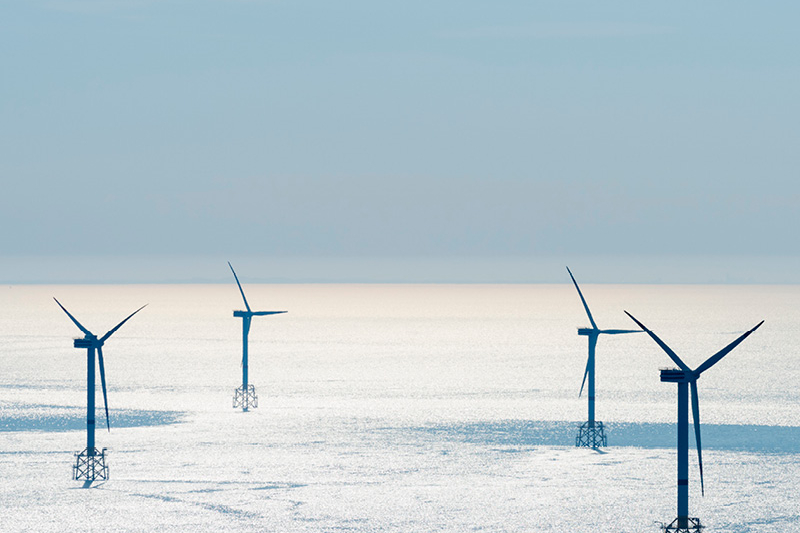
To meet project goals, proponents must understand rules related to the environment, species and habitats, and visual and noise impacts.
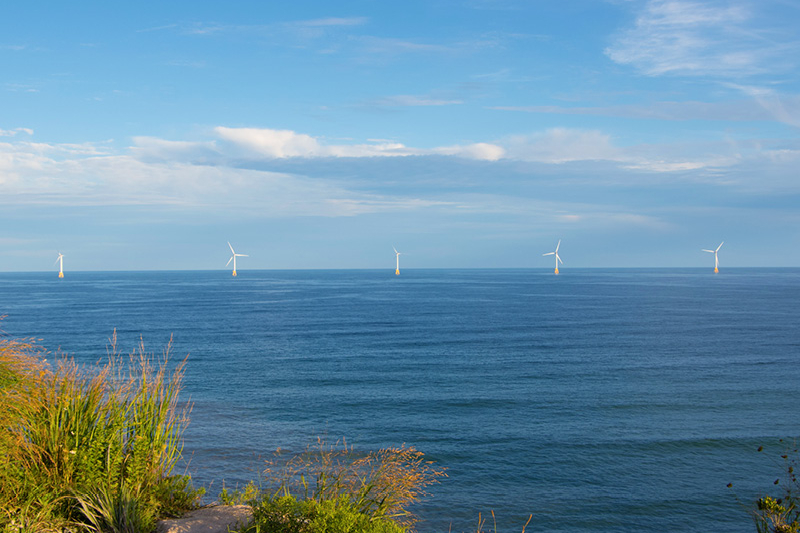
Government incentives are making it easier to finance offshore wind projects, and developers are taking lessons from Europe to manage costs and risk, and attract investors.
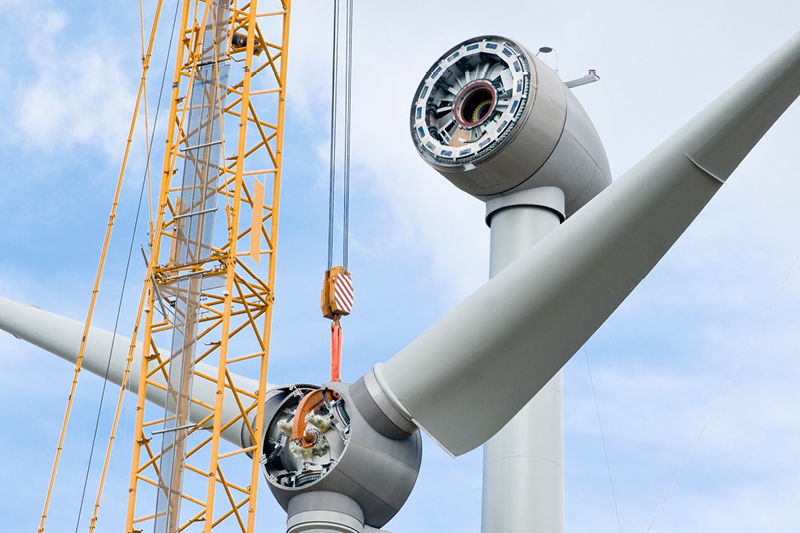
By Daniel Hagan, Fredrick Wilson, Aaron Bryant
How market design, regulation and financing will shape the future of offshore wind.
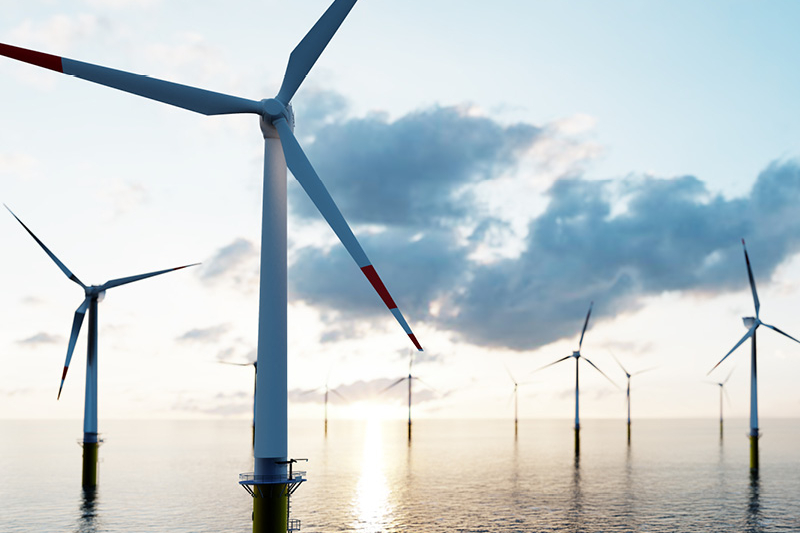
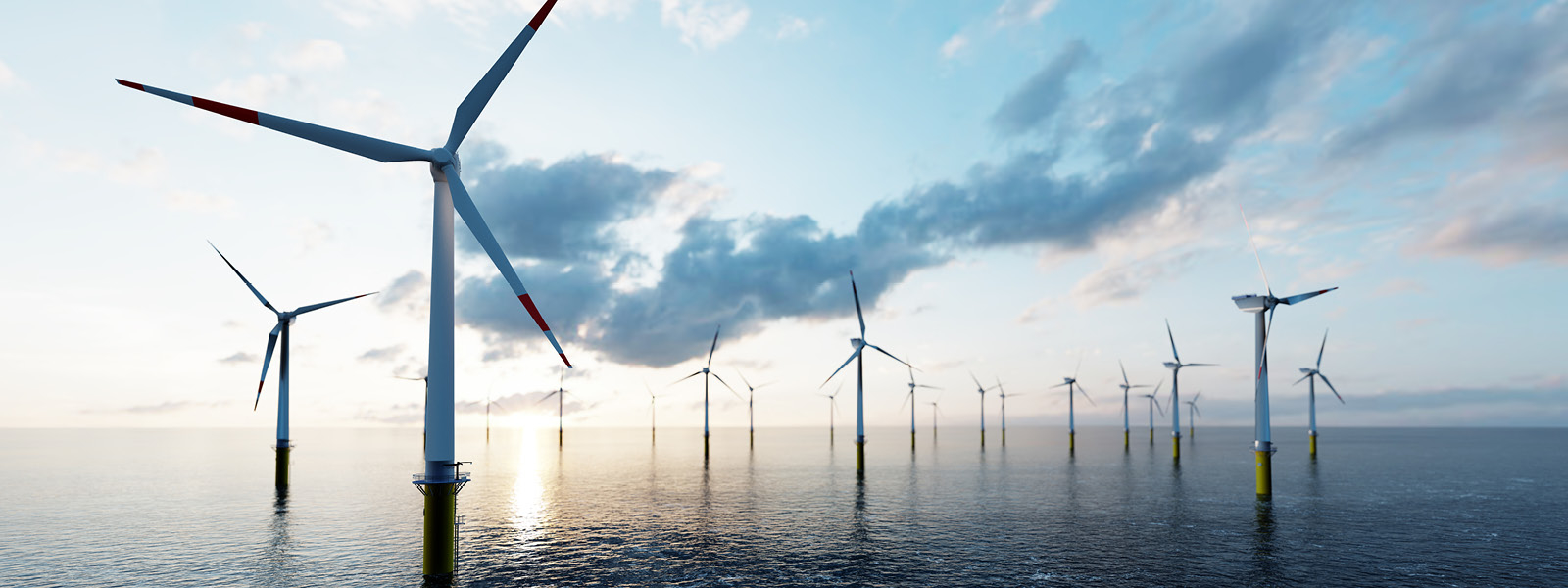
How market design, regulation and financing will shape the future of offshore wind
Offshore wind is poised for significant growth in the US. Advances in technology and other areas have brought costs down, and there are many lessons to be learned from Europe that will make US deployment easier than ever before. Moreover, the Interior, Energy and Commerce Departments announced a shared goal to deploy at least 30 gigawatts (GWs) of offshore wind in the US by 2030. Federal agencies and state governments are increasingly taking action to support offshore wind, and investors are increasingly interested in the space.
Transmission is one of the most important areas for development in coming years. To capture the opportunity, the US must design effective transmission networks that connect offshore farms and coordinate delivery of power to the grid. Regulations are evolving to support this objective, and governments and investors are innovating to develop funding mechanisms that balance risk and reward. There’s progress on almost every front, but there’s still a tremendous amount of work to do.
In this piece, we provide an overview of US offshore transmission, touching on some of the most important factors that will determine the future of offshore wind in the country: technology costs, market design, regulations, financing and stakeholder management.
The offshore wind adoption curve will follow a trajectory similar to that of solar and onshore wind in the US. As technology and processes improve across the value chain, costs will go down and developers will deploy more offshore wind supply. That is already happening in Europe. And increased capacity drives costs down further—it's a virtuous cycle.
Turbines, for example, have steadily grown bigger, outpacing the predictions and technical projections of many experts. With higher hub heights, turbines can capture wind traveling at faster speeds, enabling more efficient generation. As a result, operators need fewer turbines to generate the same amount of wind, which translates into lower capital, operating and maintenance costs. And according to a survey conducted by the science publication Nature, industry experts expect capacity factors for offshore wind turbines to increase significantly over the next decade.
Because the outer continental shelf off the east coast of the US is relatively high, most offshore wind turbines in these waters can be anchored to the ocean floor. The advent of floating wind turbines in Europe may boost project prospects in other regions of the US with deeper waters, such as the Pacific Northwest, California, Hawaii and Maine. In fact, the state of Maine, which has a ten-year moratorium on construction in state waters, is currently conducting a research project on floating offshore wind turbines.
Offshore wind farms are typically located 15 or more miles off the coast, and the power they generate is sent to shore through undersea cables. In the US, wind farms are usually designed as standalone projects that send power directly to shore.
In Europe, where the offshore wind sector is more mature, wind farms are typically connected by radial systems that aggregate power from offshore sources and coordinate transmission to the onshore grid. As the US ramps up its offshore wind capacity, it should similarly develop systems that aggregate power for transmission to shore. Although injections of significant amounts of aggregated offshore wind supply at specific points on onshore transmission networks will require costly network upgrades, the costs are likely to be offset by operational benefits and reductions in project development costs.
According to the US National Renewable Energy Laboratory (NREL), aggregating power can increase grid reliability, resilience and efficiency; bring project costs down "by as much as 10 to 18 percent;" and reduce the likelihood of conflicts with other offshore interests such as commercial fisheries.
With these benefits in mind, NREL launched the Offshore Wind Grid Integration project in February 2021 to conduct research on technologies and strategies that would integrate offshore wind installations into the power grid. Among other topics, NREL will conduct research on "the interplay among transmission configurations and technologies, grid integration requirements, energy storage options and other renewable energy sources."
Project developers continue to press for "backbone" solutions that would connect wind farms across large regions to help ensure the power they generate offshore will reach the grid. In the past, proponents including Google have proposed developing backbone transmission systems along the East Coast, and the idea is getting renewed attention from the new Chairman of the Federal Energy Regulatory Commission (FERC), Richard Glick.
As other renewable energy technologies reach parity and constitute higher proportions of the US generation portfolio, agencies and utilities may also explore hybrid systems where offshore wind, onshore wind and solar are all planned jointly with electric storage resources.
SMART-POWER. To foster a more favorable investment environment, Maryland, Virginia and North Carolina formed the Southeast and Mid-Atlantic Regional Transformative Partnership for Offshore Wind Energy Resources (SMART-POWER). The partnership will enhance interstate coordination; clarify, streamline and align state requirements; and facilitate sharing of best practices to reduce administrative burdens on project developers as well as reduce project costs.
The Brayton Point Commerce Center. In Massachusetts, a group of investors is converting the former site of a coal-fired plant into a hub, called the Brayton Point Commerce Center, which will provide manufacturing, logistics and transmission in support of offshore wind facilities. Importantly, the Center is close to new offshore wind lease areas. One developer has already announced that it will build a 1,200 MW high-voltage direct current converter and 400 MWs of battery storage on the site to entice offshore wind projects to connect with the Center.
At the federal level, the Bureau of Ocean Energy Management (BOEM) is responsible for all energy activities undertaken on the outer continental shelf, including activities related to offshore wind. FERC does not assert overlapping jurisdiction with BOEM, but it does have authority over the power markets that will eventually sell offshore wind energy.
BOEM uses a multi-phase process to authorize offshore wind development that involves assessment of activities across the lifecycle of a project, from acquiring leases and assessing possible environmental and other impacts to evaluating and approving plans for construction, operations and eventual decommissioning. For a detailed overview of the BOEM permitting process, see the article "Environmental laws and regulations affecting US offshore wind."
In addition to the steps undertaken through the federal permitting process, offshore wind developers must also obtain permits from the relevant states. To build transmission lines in their waters and connect to their onshore grids, states require developers to have a valid BOEM lease (once a lease is obtained from BOEM, remaining state and federal processes typically proceed concurrently). Usually, a state or its utilities will issue a request for proposals to procure capacity from planned offshore wind farms, leading to power purchase agreements between selected developers and participating utilities.
In recent years, BOEM has clarified the leasing and permitting process it administers through the Renewable Energy Program, making it easier for developers to navigate. BOEM will likely seek increased funding and staffing to accommodate an influx of new project applications and manage the various tasks associated with reviewing proposed sites. This will be critical to the sector’s ability to meet the Biden administration’s 2030 goals, which aim for a thousand-fold increase in offshore wind capacity compared to 2020 levels.
Given the significant development costs of offshore transmission, the sector will need access to new funding mechanisms or incentives to support the planning, development and construction of offshore transmission capacity that will enable states and the Biden administration to meet their ambitious renewable goals. We highlight three promising approaches to financing offshore wind below. See also the article "Financing US offshore wind" for more details on financing offshore development.
In 2021, the PJM regional transmission organization launched its State Agreement Approach (SAA), an innovative mechanism for planning and funding development of offshore transmission infrastructure that is designed to help states in the region achieve their renewables goals. The SAA eschews customary planning processes in favor of state-commissioned planning studies to identify infrastructure that is needed to integrate large amounts of offshore wind supply. It allows companies to submit proposals to compete for projects identified through this process. And importantly, it enables states to fund transmission projects that may not otherwise attract the required investment from merchant transmission developers or qualify for system-wide cost allocation. The New Jersey legislature already voted to coordinate with PJM, and it is poised to be the first state to use SAA to optimize its efforts to develop offshore wind infrastructure.
The Biden administration announced that it will make US$5 billion in loan guarantees available to support innovative transmission projects, including offshore wind projects, through the Department of Energy's Loan Programs Office. The availability of low-cost government loans should result in a material reduction in the cost of debt for transmission projects, improving the risk-reward calculus for project developers.
Oregon Senator Ron Wyden recently proposed a 30 percent investment tax credit for transmission network improvements that support clean energy, including transmission and storage improvements. And the Federal Energy Regulatory Commission (FERC) issued Notices of Proposed Rulemaking in 2020 and 2021 that call for reevaluation of transmission incentives. Although FERC has kept its internal deliberations out of public view, it seems to agree that there is a need for investment in transmission to support integration of renewables, and it seems generally supportive of transmission incentives. Moreover, the new FERC Chairman, Richard Glick, is supportive of renewables; all of which suggest that the agency could well make new or existing transmission incentives more readily available for development of offshore transmission relatively soon.
Developers may still face significant opposition to offshore wind projects, especially on economic and aesthetic grounds. In Massachusetts, the commercial fishing industry has vigorously argued against Vineyard Wind, citing potential adverse effects to the stock of fisheries and, consequently, trickle-down economic impacts to nearby communities.
Recent developments may make it more difficult for fishermen to prevail in their opposition. In 2021, the Department of the Interior (DOI) reversed a legal opinion by the prior administration, which had emphasized "reasonable uses" of exclusive economic zones and prioritized economic activity such as fishing over new energy projects. In an April memo, the Principal Deputy Solicitor of the DOI retracted the prior mandate and concluded that a "rational balance" of all enumerated goals should be pursued. Renewable energy is not precluded outright due to its possible contributions to environmental protection and waste prevention, two of the goals under DOI purview.
In most proposed new projects, turbines would be located far enough offshore that they would not be visible on land. But that doesn't mean stakeholders won’t object to projects on aesthetic and related economic grounds, as they did so successfully in the case of Cape Wind.
Along the New York coast, wealthy landowners in the Hamptons are concerned about transmission infrastructure proposed for the South Fork Wind Farm. Their opposition pertains to the construction and installation of underground cables, which are not exclusive to offshore wind but may be required by any new power project. It will be interesting to see how contentious this sort of opposition becomes and how developers and regulators find common ground with local residents and community stakeholders. Fortunately, opposition to the South Fork project pales in comparison to Cape Wind, which generated a combined 32 court cases and administrative hearings over the course of a protracted regulatory process.
***
The future of US offshore wind is bright. But it depends on the ability of participants—from project developers and investors to regulators and other stakeholders—to cooperate to build an ecosystem that rewards development of integrated systems and ensures reliability and resilience.
White & Case means the international legal practice comprising White & Case LLP, a New York State registered limited liability partnership, White & Case LLP, a limited liability partnership incorporated under English law and all other affiliated partnerships, companies and entities.
This article is prepared for the general information of interested persons. It is not, and does not attempt to be, comprehensive in nature. Due to the general nature of its content, it should not be regarded as legal advice.
© 2021 White & Case LLP